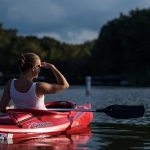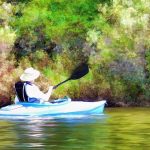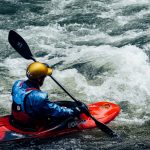Welcome to an exhilarating journey through the world of whitewater kayaking! In this guide, we’ll take you from the very basics of this thrilling sport to exploring iconic whitewater destinations worldwide.
Each section of this article offers valuable insights and practical tips to help you become a confident and skilled whitewater kayaker. So, grab your paddle and let’s dive into the excitement!
| Section | What you’ll learn |
|---|---|
| 1 | Introduction to Whitewater Kayaking |
| – Definition and evolution of whitewater kayaking | |
| – Benefits of kayaking as an outdoor activity | |
| 2 | Getting Started with Whitewater Kayaking |
| – Mastering essential paddling techniques | |
| – Identifying and responding to river hazards | |
| 3 | Techniques for Intermediate Whitewater Kayakers |
| – Advancing to higher river classifications | |
| – Perfecting kayaking maneuvers and tricks | |
| 4 | Advanced Whitewater Kayaking Skills and Challenges |
| – Exploring multi-day expeditions | |
| – Mastering advanced rescues and safety techniques | |
| 5 | Whitewater Kayaking Around the World |
| – Discovering iconic whitewater destinations | |
| – Navigating logistics for international trips |
From understanding the fundamentals of whitewater kayaking to navigating challenging rapids, each section of this article is designed to enhance your skills and knowledge.
By the end of this guide, you’ll be ready to embark on your whitewater kayaking adventure, explore thrilling rivers around the world, and become part of a vibrant kayaking community.
So, are you ready to feel the rush of the river and embrace the freedom of kayaking?
Let’s dive in and embark on an unforgettable journey!
Table of Contents
- The Basics Of Whitewater Kayaking For Beginners
- Finding Whitewater Kayaking Locations for Beginners
- Getting Started with Whitewater Kayaking
- Building Strength and Endurance for Whitewater Kayaking
- Developing Mental Resilience and Mindfulness
- Techniques for Intermediate Whitewater Kayakers
- Participating in Kayaking Events and Competitions
- Understanding River Conservation and Stewardship
- Advanced Whitewater Kayaking Skills and Challenges
- Expedition Planning and River Exploration
- Embracing the Whitewater Kayaking Lifestyle
- Whitewater Kayaking Around the World
- Conclusion: Embarking on Your Whitewater Kayaking Journey
The Basics Of Whitewater Kayaking For Beginners
Are you ready to embark on an exhilarating adventure that will test your mettle and push your boundaries? Whitewater kayaking, the thrilling water sport of navigating surging rapids and turbulent rivers, offers an adrenaline rush like no other.
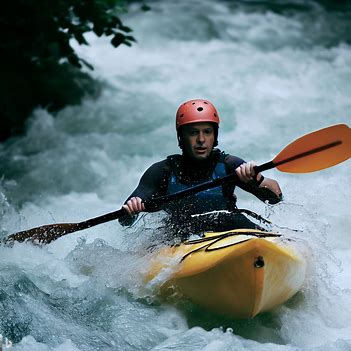
As a beginner, you might wonder what makes whitewater kayaking so appealing and why people become enamored with it. Well, hold on tight as we dive into the basics of whitewater kayaking, exploring its history, the variety of rapids, and the allure that draws adrenaline junkies and thrill-seekers from all walks of life.
What is Whitewater Kayaking?
Whitewater kayaking is more than just a sport; it’s an art of taming nature’s raw power with a small plastic boat and skillful maneuvers. Picture yourself, not just on flat water, but riding down rivers filled with frothy, bubbling rapids, occasionally facing the challenge of free-falling waterfalls.
This thrilling water sport comes in various forms, catering to different tastes and skill levels.
From serene Class I rapids, ideal for beginners, to the hair-raising Class V and VI rapids that only seasoned kayakers dare to navigate, whitewater kayaking offers something for everyone.
- 1: Whitewater kayaking involves riding down rivers with varying grades of rapids, created when river gradients change significantly, generating turbulence and an unstable current.
- 2: The history of whitewater kayaking dates back to the early 20th century when paddlers sought new ways to explore and challenge nature’s wildest waters.
- 3: The allure of whitewater kayaking lies in the thrill of conquering untamed rivers, the sense of accomplishment, and the adrenaline-fueled rush that accompanies every successful run.
Types of Whitewater and Kayaking Classifications
Whitewater rapids come in different classes, each reflecting the level of difficulty and challenge they present to kayakers.
| Type | Description |
|---|---|
| Playboats | Designed for performing tricks and maneuvers in rapids |
| River runners | Designed for running rapids and navigating rivers |
| Creek boats | Designed for steep, technical rapids |
| Long kayaks | Designed for speed and tracking in whitewater |
The International Scale of River Difficulty categorizes rapids into six classes, ranging from Class I, gentle and easy, to Class VI, extremely hazardous and unnavigable.
As a beginner, your journey into the world of whitewater kayaking will start with Class I and II rapids, where you’ll learn the fundamentals and build your confidence.
- Understanding the different classifications of whitewater helps paddlers select suitable rivers and rapids based on their experience and skills.
- The difficulty of rapids is influenced by various factors, including the water’s flow, gradient, and the presence of obstacles such as rocks and drops.
- Beginners typically use general-purpose kayaks designed for stability and ease of handling, making them suitable for Class I and II rapids.
Essential Equipment for Whitewater Kayaking
Before venturing into whitewater kayaking, it’s essential to equip yourself with the right gear to ensure safety and enhance your experience.

Your primary companions on this adventure will be a reliable kayak, a paddle designed for whitewater, and a personal flotation device (PFD) to keep you buoyant in the water.
Beyond these essentials, there are various optional accessories and safety gear, such as helmets, spray skirts, and river knives, that can make your journey safer and more comfortable.
- Choosing the appropriate kayak is crucial, with playboats for freestyle, river runners for versatility, and creek boats for more challenging expeditions.
- The importance of a well-fitted PFD cannot be overstated, as it can save your life during unexpected events and provide added buoyancy for swimming in rapids.
- Customizing your kayak with outfitting adjustments, such as hip pads and footrests, enhances control and comfort, making your paddling experience more enjoyable.
Safety Precautions and River Etiquette
Safety should always be a top priority in whitewater kayaking, considering the inherent risks and challenges posed by fast-moving, unpredictable waters.
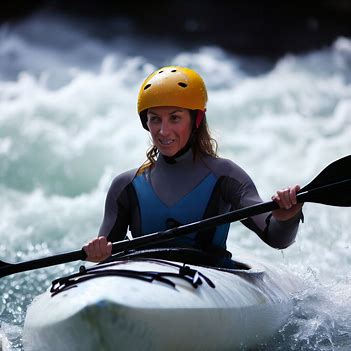
Before hitting the rapids, it’s essential to understand and implement safety protocols, such as river signals and communication among paddlers.
Additionally, adopting responsible river etiquette and environmental consciousness ensures that you leave the river better than you found it, respecting its fragile ecosystem.
- Learning how to assess and mitigate risks is crucial, involving understanding river dynamics, reading water, and recognizing potential hazards.
- Effective communication with fellow paddlers, including hand signals and verbal cues, is essential for maintaining safety and coordination on the river.
- Respecting the environment and adopting Leave No Trace principles can help preserve natural habitats and ensure a sustainable future for whitewater kayaking.
Finding Whitewater Kayaking Locations for Beginners
As a beginner, choosing the right rivers and rapids to paddle is essential to ensure a positive and enjoyable experience. Seek out beginner-friendly rivers and water bodies with Class I and II rapids to build your skills and confidence.
Researching guided tours or joining local kayaking clubs can provide valuable insights and support as you embark on your whitewater journey.
- Online resources and kayaking communities are excellent sources for finding nearby rivers and rapids suitable for beginners.
- Guided tours and lessons offer structured instruction and guidance for new kayakers, providing a safe and enjoyable introduction to the sport.
- Evaluating the difficulty level of a river requires considering water flow, the presence of obstacles, and assessing your personal skill level.

Now that you’ve gained a glimpse into the fascinating world of whitewater kayaking for beginners, are you ready to dive deeper?
In the next section, we’ll explore the essential techniques every aspiring whitewater kayaker must master.
From perfecting paddling strokes to understanding river hazards, we’ll equip you with the skills and knowledge needed to navigate the wildest rapids with confidence.
In the next section I will show you how to take your beginner whitewater kayaking journey to the next level!
Getting Started with Whitewater Kayaking
Learning Basic Kayaking Techniques
Once you’ve dipped your paddle into the world of whitewater kayaking and built some confidence navigating Class I and II rapids, it’s time to dive deeper into the essential techniques that will elevate your paddling prowess.

Proper paddling strokes are the foundation of effective maneuvering in rapids, allowing you to harness the power of the river currents and steer your kayak with precision.
The forward stroke, reverse stroke, and sweep stroke are fundamental maneuvers that every kayaker must master.
- The forward stroke involves using a combination of core, arm, and wrist movements to propel the kayak forward smoothly and efficiently. As I gained experience, I realized that mastering this stroke not only improves speed but also reduces fatigue during longer paddling sessions.
- The reverse stroke, or backward paddle, is essential for quick maneuvers and corrections while navigating tight spots or avoiding obstacles. Practicing this stroke in calm water will build confidence for its application in challenging rapids.
- The sweep stroke is a powerful turning technique that involves drawing the paddle in a wide arc away from the kayak’s side. This stroke enables precise control and redirection, especially when navigating around rocks or eddies.
Understanding River Hazards and How to Respond
Whitewater kayaking offers a thrilling adventure, but it’s essential to recognize and manage potential hazards to ensure a safe journey.
Identifying common hazards, such as rocks, strainers (obstructions that can trap or pin a kayaker), and hydraulics (powerful recirculating currents), is crucial for risk assessment.
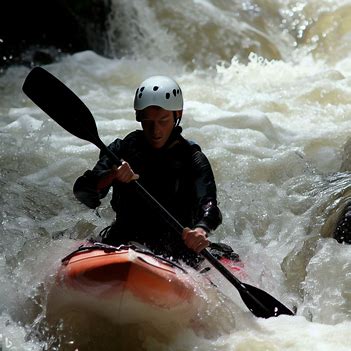
Knowing how to respond to these hazards can make all the difference in staying afloat and avoiding accidents.
- One of my early experiences involved encountering a strainer, where a fallen tree created a dangerous obstruction in the river. Recognizing the hazard allowed me to plan a safe route around it, avoiding potential entanglement.
- Strategies for avoiding hazards include carefully studying the river’s layout and planning your line before entering a rapid. Staying alert and maintaining situational awareness during your descent is essential for swift responses to changing conditions.
- In the event of a capsizing or other emergencies, it’s crucial to remain calm and follow the appropriate rescue techniques. Practicing self-rescue skills, such as rolling back upright after a flip, can be a lifesaver in challenging situations.
Solo vs. Group Kayaking – Pros and Cons
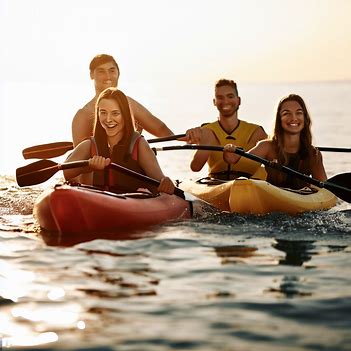
Whitewater kayaking can be a solitary pursuit or a social adventure, depending on your preferences and circumstances.
Paddling alone offers a sense of freedom and self-reliance, allowing you to connect with nature on a deeper level.
However, solo kayaking comes with added responsibility, as you are solely responsible for your safety.
On the other hand, joining a kayaking group or paddling with experienced companions can be immensely rewarding, providing camaraderie, support, and shared learning experiences.
- Solo kayaking can be liberating, as it allows you to set your own pace and explore rivers on your terms. However, it’s essential to inform someone about your paddling plans and stick to rivers within your skill level.
- Kayaking with a group or experienced paddlers provides an excellent opportunity to learn from others and gain confidence through shared knowledge. I vividly remember my first group paddling trip, where I received valuable tips and encouragement from seasoned kayakers.
- Finding kayaking communities or clubs in your area can enhance your paddling journey, providing opportunities for regular meet-ups, skill-building workshops, and organized trips to various rivers.
Building Strength and Endurance for Whitewater Kayaking
Whitewater kayaking demands physical fitness and stamina to tackle challenging rapids and paddle for extended periods. As you progress in your paddling skills, investing in off-water training and exercises can significantly improve your performance and reduce the risk of injuries.

- Engaging in physical training that targets core strength, upper body endurance, and cardiovascular fitness can boost your paddling abilities. Incorporating exercises such as planks, push-ups, and kettlebell swings can help build the muscles necessary for kayaking.
- Off-water training, such as indoor kayaking on a paddle ergometer or participating in paddle-specific workouts, can help refine your paddling technique and build muscle memory. I found that practicing on a paddle ergometer during the off-season improved my paddling efficiency when I hit the river again.
- Preventing common kayaking-related injuries, such as shoulder strains and wrist pain, involves incorporating stretches and mobility exercises into your routine. Additionally, maintaining proper form and posture while paddling can reduce the risk of overuse injuries.
Developing Mental Resilience and Mindfulness
Whitewater kayaking is not just a physical challenge; it also tests your mental resilience and emotional fortitude.
As you face roaring rapids and potential risks, coping with fear and anxiety becomes essential for maintaining focus and making sound decisions on the river.

- My initial encounters with Class III rapids triggered nervousness and self-doubt, but over time, I learned to embrace fear as a normal part of the kayaking experience. Acknowledging fear and learning to manage it allowed me to focus on paddling with a clear mind.
- Practicing mindfulness during paddling enables you to be present in the moment, fully aware of the river’s dynamics and your surroundings. Cultivating this awareness enhances your ability to read water and respond intuitively to changing river conditions.
- Balancing the excitement and adrenaline rush with a sense of caution is crucial for a safe and enjoyable experience. Embracing the thrill of whitewater kayaking while maintaining respect for the river’s power ensures that every descent is both memorable and rewarding.
Congratulations! You’ve now mastered the basic techniques and safety protocols for whitewater kayaking, setting the foundation for more thrilling adventures ahead.
In the next section, we’ll explore techniques and strategies for intermediate whitewater kayakers, including progressing to higher classifications, mastering advanced maneuvers, and understanding river hydrology.
So, gear up and get ready to take your kayaking skills to the next level…
Techniques for Intermediate Whitewater Kayakers
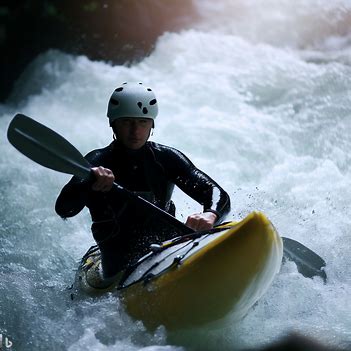
Progressing to Higher Whitewater Classes
As you gain confidence and experience in navigating Class II and III rapids, you may find yourself yearning for more thrilling challenges on the river.
| Class | Description |
|---|---|
| Class I | Easy – Waves small, passages clear; no serious obstacles, perfect for all ages and abilities. No guide needed |
| Class II | Medium – Rapids of low difficulty with passages clear. Suitable for everyone, no experience necessary. A guide is preferable for these rapids, but not required |
| Class III | Moderate – Waves numerous, high, irregular; rocks; eddies; rapids with passages clear though narrow, requiring experience in maneuvering. No previous experience is necessary |
| Class IV | Difficult – Long rapids; waves powerful, irregular; dangerous rocks; boiling eddies; powerful and precise maneuvering required. Have an experienced guide. Previous experience is helpful, but not necessary |
| Class V | Extremely Difficult – Exceedingly difficult, long and violent rapids, following each other almost without interruption; riverbed extremely obstructed; big drops; violent currents; very steep gradient |
| Class VI | Extremely Dangerous – The difficulties of Class V carried to the extreme of navigability. Nearly impossible and very dangerous. For teams of experts only, at favorable water levels, after close personal inspection and taking all precautions |
Progressing to higher whitewater classes requires a gradual approach to ensure your safety and competence. Recognizing your readiness for tackling more difficult rapids is crucial, as pushing beyond your comfort zone can lead to unnecessary risks.
Seeking guidance from experienced kayakers or an instructor is highly beneficial, as they can offer valuable insights and provide on-the-water training to sharpen your skills.
- When I decided to tackle Class IV rapids, I sought advice from seasoned kayakers who had already conquered such challenges. Their tips on reading the river, understanding the intricacies of rapids, and anticipating potential obstacles proved invaluable during my progression.
- Gradually advancing to higher whitewater classes allows you to build a strong foundation of kayaking techniques and river knowledge. It’s essential to be patient and focus on refining your skills before tackling more aggressive rapids.
- Remember that kayaking is a journey, and there is no rush to tackle the most challenging rapids immediately. Take the time to hone your abilities, and trust your instincts when you feel prepared to embrace the excitement of more difficult whitewater.
Perfecting Kayaking Maneuvers and Tricks
As an intermediate whitewater kayaker, you’ve already mastered the basics of rolling and combatting rolls for self-rescue.
Now, it’s time to delve into the world of freestyle kayaking and advanced maneuvers that add an element of playfulness and creativity to your paddling repertoire.
Freestyle kayaking involves executing various tricks and stunts in the river’s features, such as waves and holes, to showcase your paddling finesse.
| Maneuver/Trick | Description |
|---|---|
| Edging | A foundational whitewater skill that involves lifting one knee to engage the edge of the kayak, providing a flat, stable hull to surf waves and glide across the water on |
| Sweep Stroke | A stroke used to steer the kayak, involving a forward sweep when paddling forward and a reverse sweep when going backward |
| Forward Stroke | A stroke used to paddle the kayak forward, involving reaching forward with the paddle blade, putting it fully in the water, and pulling the kayak past the paddle while pushing with the top hand |
- Learning to perform roll recoveries and combat rolls is crucial for self-rescue during challenging rapids. Practicing these maneuvers regularly in calm water will enhance your confidence and preparedness for unexpected flips.
- Embracing freestyle kayaking introduces a whole new dimension to your paddling experience. Performing basic tricks, such as stern squirts, enders, and pirouettes, adds an element of fun and self-expression to your river adventures.
- As you gain confidence in freestyle kayaking, you can progress to more advanced techniques, such as boofing (launching your kayak off a ledge to avoid obstacles) and surfing (riding the waves in a stationary position). These maneuvers require precise timing and control, and they add an adrenaline-pumping thrill to your whitewater journey.
Understanding River Hydrology and Reading Water
River hydrology is the study of how water flows and interacts within a river system, and understanding it is essential for any serious whitewater kayaker.
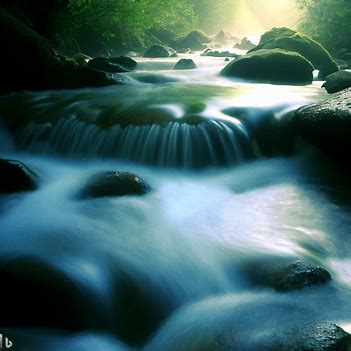
River hydrology plays a significant role in shaping the river’s features, including rapids and eddies.
Being able to read water features and anticipate river dynamics is crucial for choosing the best line and paddling strategies.
- Understanding river hydrology helped me develop a deeper appreciation for the rivers I paddled. As I learned to recognize hydraulic jumps, boils, and eddy lines, I could better navigate and utilize the river’s dynamics to my advantage.
- Reading water features involves observing how the river’s flow interacts with rocks, boulders, and other obstacles. By understanding how water behaves in specific situations, you can make informed decisions on your paddling route.
- Utilizing river features, such as eddies (calm pockets of water behind rocks) and lateral waves, can be instrumental in navigating rapids and resting during your descent. Developing this skill takes time and practice, but it significantly improves your paddling efficiency and safety.
Participating in Kayaking Events and Competitions
As an intermediate whitewater kayaker, you may want to challenge yourself further by participating in kayaking events and competitions.

Whitewater kayaking events offer a unique opportunity to showcase your skills, learn from fellow kayakers, and immerse yourself in the vibrant kayaking community.
- Participating in kayaking events exposes you to a diverse range of river conditions and challenges. Whether it’s a slalom race or a freestyle competition, each event offers a chance to test your abilities and learn from other skilled paddlers.
- Before entering a kayaking race, it’s essential to prepare adequately. Pay attention to the event’s guidelines and requirements, and ensure you have the appropriate gear and safety equipment.
- Aside from the competitive aspect, kayaking events foster a sense of camaraderie among participants. I’ve made lasting friendships with fellow kayakers I met during events, and we continue to explore rivers together, sharing our passion for the sport.
Understanding River Conservation and Stewardship
As a kayaker, you have a responsibility to preserve and protect the rivers you love. Understanding the importance of river conservation and stewardship is vital for maintaining the natural beauty of waterways and ensuring they remain accessible to future generations of paddlers.
- I believe that the beauty and serenity of rivers should be enjoyed responsibly. Paddlers should always adhere to “Leave No Trace” principles, ensuring that we leave the river and its surroundings as pristine as we found them.
- Getting involved in river cleanup initiatives and conservation organizations is a meaningful way to give back to the environment that brings us so much joy. By actively participating in cleanup efforts, I’ve witnessed the positive impact we can have on the health of our rivers.
- As kayakers, we must strive to be environmental stewards, advocating for the protection of our waterways from pollution and degradation. Together, we can make a difference in preserving the rivers we love and sharing their beauty with future generations.
Congratulations! You’ve now honed your skills as an intermediate whitewater kayaker, taking on more challenging rapids and perfecting advanced maneuvers.
In the next section, we’ll explore the world of advanced whitewater kayaking, including multi-day expeditions, tackling waterfalls, mastering advanced rescues, and planning river explorations.
Get ready to push your limits and explore the thrilling world of advanced whitewater kayaking in Section 4!
Advanced Whitewater Kayaking Skills and Challenges
Exploring Multi-Day Kayaking Expeditions
Venturing into multi-day kayaking expeditions is a thrilling experience that allows you to immerse yourself fully in the beauty and wilderness of nature.
However, embarking on extended river trips requires careful preparation and planning to ensure safety and comfort throughout the journey.
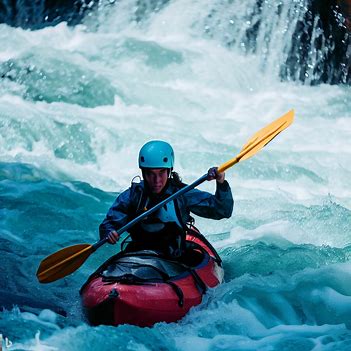
Before setting off on a multi-day adventure, consider the following essential points:
- Preparing for extended river trips and camping logistics demands meticulous attention to detail. Ensuring you have proper shelter, food, and safety equipment is crucial for a successful expedition. I learned this the hard way during my first multi-day trip when I overlooked some essential items, leading to discomfort and a few sleepless nights.
- Packing the right gear and supplies is vital for multi-day kayaking journeys. Lightweight camping gear, dry bags, and a comprehensive first-aid kit are indispensable. Remember, you’ll need to carry all your essentials in your kayak, so optimizing space is key.
- Navigating challenges unique to overnight kayaking adventures, such as changing weather conditions and limited access to resources, requires adaptability and resilience. However, the rewards of waking up to stunning sunrises, camping under starlit skies, and paddling through untouched wilderness make the effort more than worthwhile.
Introduction to Waterfalls and Creeking
Extreme whitewater kayaking enthusiasts are drawn to the exhilarating world of waterfalls and creeking, which involves descending steep creeks and running waterfalls.
This type of kayaking demands a high level of skill and courage, as the risks and rewards are equally substantial.
Before attempting waterfall descents and creeking, it’s essential to approach the challenge with utmost caution and thorough preparation.

- Understanding the risks and rewards of running waterfalls is paramount. Waterfalls pose unique dangers, including powerful hydraulics and submerged obstacles. Proper scouting and risk assessment are vital before deciding to attempt any waterfall.
- Tips for safely descending steep creeks and waterfalls include meticulous route planning and scouting from various angles. Understanding the hydraulic dynamics and the ideal entry and exit points can significantly enhance your safety during such descents.
- Progressing in the world of extreme whitewater kayaking requires patience and a commitment to learning. Start with smaller waterfalls and gradually work your way up as you gain experience and confidence. Joining a kayaking group or seeking guidance from experienced creek boaters can also accelerate your growth as a creeker.
Mastering Advanced Rescues and Safety Techniques
As you take on more challenging whitewater, the need for advanced rescue techniques becomes increasingly evident.
| Technique | Description |
|---|---|
| Reach | Use a long stick, a scarf, clothes or anything else to reach out to the person in need of rescue |
| Wade | Test the depth with a long stick before wading in and then use the stick to reach out |
| Throw | Throw a rope or other flotation device to the person in need of rescue, then pull them in |
| Row | Use a boat if there is one nearby and if you can use it safely |
Mastering these skills is vital for your safety and the safety of others. In challenging whitewater scenarios, the ability to execute precise and effective rescues can be a game-changer. Here are some critical points to consider:
- Advanced rescue strategies for challenging whitewater scenarios involve understanding and utilizing throw bags and rope systems. Practice executing various rescue scenarios with your paddling companions to ensure seamless teamwork during emergencies.
- Practicing throw bag and rope rescue techniques is essential for any kayaker aiming to progress to advanced whitewater. Familiarize yourself with the proper use of throw bags and their reach, and learn how to set up and use rope systems for more complex rescues.
- Understanding the role of kayaking safety gear in demanding conditions is critical for maintaining your safety and the safety of your group. Regularly inspect your safety equipment, such as helmets, PFDs, and rescue gear, to ensure they are in optimal working condition.
Expedition Planning and River Exploration
Planning and executing a kayaking expedition are exhilarating experiences that allow you to explore new rivers and territories.
However, with great adventure comes great responsibility. Responsible exploration is essential to minimize the impact on the environment and avoid causing harm to natural habitats.

Here are some key points to keep in mind:
- Point 1: The process of planning and executing a kayaking expedition requires careful research and preparation. Study the river you intend to explore, understand its flow patterns, and consult with local experts or experienced kayakers who have previously paddled the same river.
- Point 2: Documenting and sharing your river exploration experiences can not only serve as a personal record but also inspire and educate fellow paddlers. Sharing your journey through blogs, videos, or social media can be a powerful way to promote responsible exploration and appreciation for the natural world.
- Point 3: Promoting responsible exploration involves adhering to Leave No Trace principles while kayaking. Minimize your impact on the environment by properly disposing of waste, avoiding camping too close to the riverbank, and refraining from disturbing wildlife.
Embracing the Whitewater Kayaking Lifestyle
Whitewater kayaking is more than just a sport; it’s a way of life. As you progress and become more involved in the kayaking community, you’ll find that it shapes your values, goals, and perspectives.
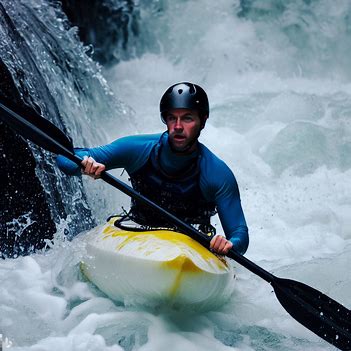
Here are some essential aspects of the whitewater kayaking lifestyle:
- The community and culture surrounding whitewater kayaking are a significant part of the experience. Engaging with fellow paddlers, sharing stories around the campfire, and supporting one another on the river create lasting bonds and friendships.
- How to stay motivated and continually improve as a kayaker requires a growth mindset. Embrace challenges as opportunities to learn and develop your skills. Even experienced kayakers continually seek ways to enhance their abilities and try new techniques.
- Balancing your passion for kayaking with other aspects of life is crucial for maintaining a well-rounded lifestyle. While kayaking is undoubtedly exhilarating, it’s essential to find harmony with work, family, and other personal pursuits.
Congratulations, you’ve now honed your skills as an advanced whitewater kayaker, exploring multi-day expeditions, descending waterfalls, and mastering advanced rescue techniques.
In the next and final section, we’ll take you on a global adventure, exploring iconic whitewater destinations around the world.
Get ready to expand your horizons and learn about the incredible opportunities for whitewater kayaking on an international scale in Section 5!
Whitewater Kayaking Around the World
Exploring Iconic Whitewater Destinations
As you’ve honed your whitewater kayaking skills through various levels of difficulty, it’s time to broaden your horizons and explore the world’s most iconic whitewater destinations.
These awe-inspiring rivers offer paddling experiences that combine breathtaking scenery with exhilarating challenges.
Here are some remarkable whitewater destinations to add to your kayaker’s bucket list:
- Highlighting famous whitewater rivers and destinations worldwide will transport you to incredible paddling opportunities. The Zambezi River in Africa, renowned for its impressive rapids and the mighty Victoria Falls, is a dream destination for adventurous kayakers seeking unforgettable experiences.
- The appeal of international kayaking trips goes beyond paddling; it’s an opportunity to immerse yourself in different cultures and experience the natural wonders of foreign lands. From the lush rivers of Costa Rica to the remote rivers of Nepal, these experiences will undoubtedly enrich your life.
- Preparing for international travel and navigating language barriers requires careful planning and cultural sensitivity. Familiarize yourself with local customs, learn essential phrases in the native language, and ensure your travel documents are in order to enjoy a smooth journey.
Navigating Logistics and Resources
Traveling to distant whitewater destinations demands thorough preparation to ensure a seamless and enjoyable experience. Here are essential points to consider when planning your international kayaking trip:
- Point 1: Researching and selecting reputable local outfitters or guided tours can significantly enhance your international kayaking adventure. Local experts not only provide valuable insights into the rivers but also ensure your safety and facilitate your logistics.
- Point 2: Understanding the local regulations and permits required for kayaking in foreign countries is vital. Some rivers may have restrictions or require special permits for access, and abiding by these regulations demonstrates respect for the local environment and communities.
- Point 3: Evaluating your gear and equipment for international travel ensures you have all the essentials for a successful trip. Check that your kayak, paddle, safety gear, and camping equipment meet the requirements of the specific rivers you’ll be paddling.
Benefits of Kayaking Abroad
Kayaking abroad offers unique advantages beyond the thrill of paddling in new surroundings. Here are some notable benefits of venturing into international whitewater:
- Broadening your kayaking skills and experiences through exposure to diverse river types and paddling conditions. International rivers present different challenges and water characteristics, allowing you to become a more versatile kayaker.
- The joy of immersing yourself in new cultures and environments, fostering a deeper appreciation for the world’s natural wonders. From lush rainforests to arid canyons, each river showcases unique landscapes and wildlife.
- The camaraderie of connecting with fellow paddlers from different countries fosters a global kayaking community. Exchanging stories and experiences with paddlers from different backgrounds enriches the overall kayaking journey.
Conclusion – Embarking on Your Whitewater Kayaking Journey
Congratulations! You’ve now completed the five-part series on “The Basics of Whitewater Kayaking for Beginners” and explored various aspects of this exhilarating sport.
You began with an introduction to whitewater kayaking, understanding river classifications, and essential equipment. Moving forward, you mastered basic and intermediate techniques, developed mental resilience, and embraced the whitewater kayaking lifestyle.
In the final chapter, we delved into the realm of advanced whitewater kayaking, including multi-day expeditions, waterfalls and creeking, advanced rescues, expedition planning, and the allure of kayaking worldwide.
Remember, whitewater kayaking is not just a sport but a lifestyle that fosters a sense of adventure, connection, and environmental stewardship.
As you embark on your whitewater kayaking journey, always prioritize safety, environmental responsibility, and the thrill of exploration. Whether you choose to paddle familiar rivers or venture abroad to discover new horizons, may your passion for whitewater kayaking continue to flow with the currents of life.
Happy paddling!
Frequently Asked Questions (FAQs)
Q1: What is whitewater kayaking, and why is it so popular as an out
Whitewater kayaking is a thrilling water sport that involves navigating through fast-flowing rivers and rapids using specialized kayaks and paddles. It has gained immense popularity due to the adrenaline rush it provides, the opportunity to connect with nature, and the sense of achievement in conquering challenging rapids.
Q2: How do I choose the right equipment for whitewater kayaking as a beginner?
As a beginner, it’s crucial to select the right kayak, paddle, and safety gear for a safe and enjoyable experience. Look for a stable and maneuverable kayak suitable for beginners, a sturdy paddle that suits your height, and a properly fitting personal flotation device (PFD) to ensure your safety on the water.
Q3: What are some essential safety precautions and river etiquette for whitewater kayaking?
Safety should be a top priority in whitewater kayaking. Always wear your PFD, follow safety protocols, and learn river signals for effective communication. Practice environmental responsibility by respecting nature and leaving no trace while kayaking.
Q4: How can I progress from beginner to intermediate whitewater kayaking skills?
Gradually progress to more challenging river classifications as you gain experience and confidence. Seek guidance from experienced kayakers or instructors, and practice advanced techniques like combat rolls and boofing.
Q5: What are some iconic whitewater destinations around the world for kayaking enthusiasts?
There are numerous world-renowned rivers and destinations for whitewater kayaking, offering breathtaking experiences and cultural encounters. Prepare for international travel, immerse yourself in different cultures, and navigate language barriers to embark on unforgettable kayaking adventures.

